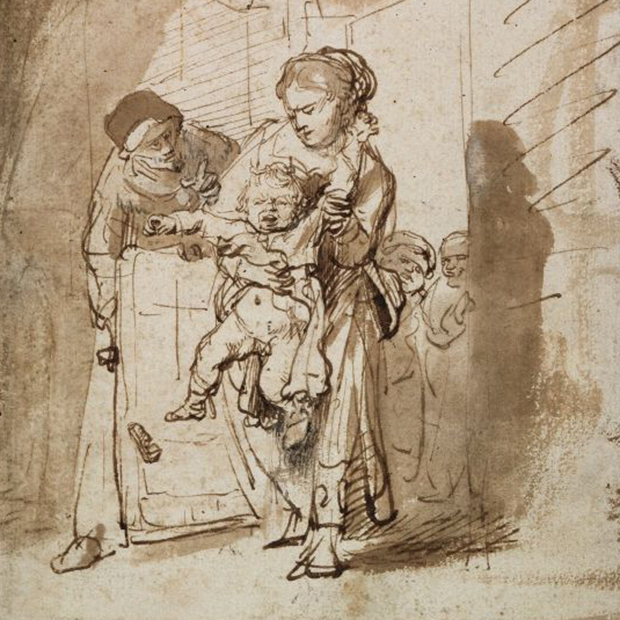Susanna’s Manners
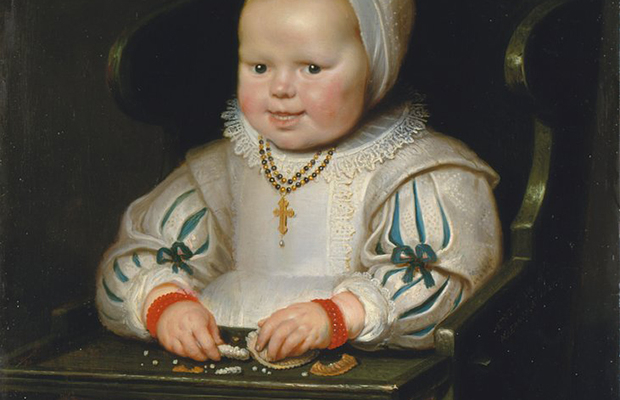
Susanna’s fond parents made two of the biggest lockdown mistakes: confining her in a massively heavy baby-chair, built to withstand temper tantrums and foil attempts at escape, and then overdosing the child on sweet cakes which were meant to shut the little perisher up, but as we can see are having the reverse effect.
The flushed pink cheeks and over bright eyes, the rosebud mouth emitting a piercing scream, and the stout boots drumming on the chair, all point to a sugar rush, avoidable perhaps by offering a well-washed carrot or a banana instead.
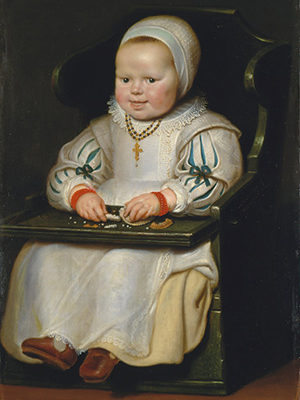
Many an exhausted Hackney parent will rejoice when conditions make it possible for some schools and nurseries reopen, and they can get a bit of respite. The quadruple G&T that can sooth a grumpy granny might have worked in Hogarth’s time, but is not compatible with today’s childcare, neither for child nor minder. But other means of restraint are interesting.
Take a look at the heavy chair that contains our Susanna: you can just make out the solid frame with its four thick legs, the baroque curves of the back and sides, and the tray with its enclosing rim, and cupboard space inside.
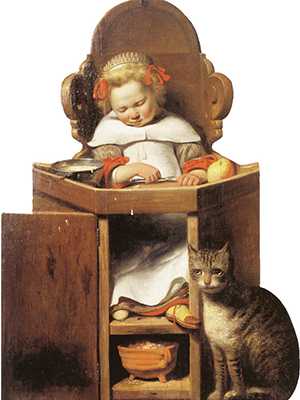
Built like a battleship, or more likely a merchant vessel, with the combined skills of the shipyards and carpenters of Holland, Europe’s richest trading nation, and we have a piece of furniture that defies a pent up child’s lust for freedom, keeping it prisoner in a rigid but protective embrace.
This image of a child in a high chair, by Johannes Verspronck, painted in 1654, is more sinister.
The sleeping infant is wedged into one of those massive structures, opened up to reveal a lower shelf on which sits an earthenware pot of hot coals.
A messy bowl of uneaten food slops all over the tray, and a wakeful cat, a paw raised in warning, points to the silk ribbon of the child’s shoe, slipping towards the burning embers, as if arson were not enough, along with carbon monoxide poisoning, to add to this evidence of child neglect.
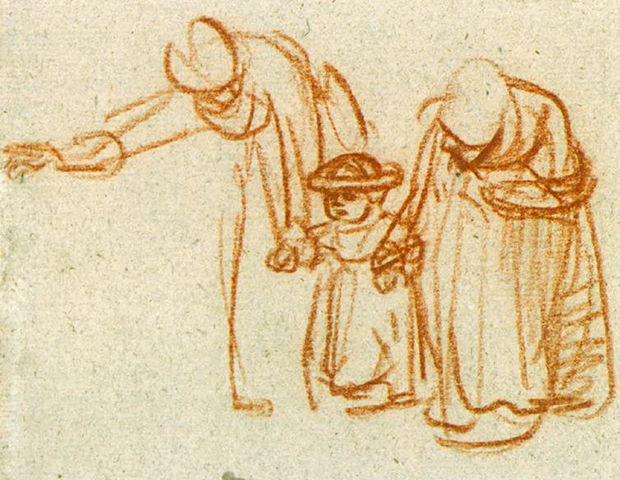
But childcare in 17th-century Holland was kindly, as Rembrandt caught in this little sketch of a toddler, head safely enclosed in a crash helmet, taking its first steps, proud mother urging her on, prudent granny holding her back.
This helmet appears in many Dutch genre paintings, a clever and comfortable form of protection; here Nicolaes Maes shows a lacemaker at work in a tranquil domestic setting, the young mother bows her head over this constricting, tedious activity, while the child looks firmly ahead, determined to get the hell out as soon as he can.
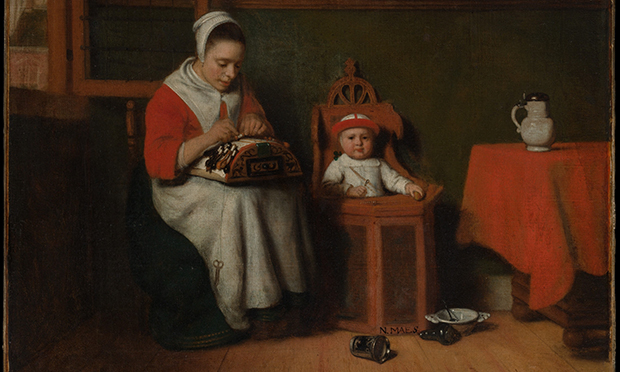
Image: The Friedsam Collection, Bequest of Michael Friedsam, 1931
Another structure seen in 17th-century paintings is the baby-walker, evolved to mitigate an infant’s first experience of the heady joys of independent movement.
It is a universal truth that a manic toddler can wreck a tidy living room in seconds, like a Second World War Sherman tank, and it would be a heart of stone that did not condone this delight in its newfound freedom.
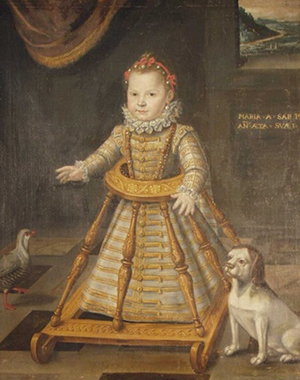
So the walking frame evolved, allowing mobility with built-in protection; a robust structure on wheels, sometimes with the equivalent of our familiar six feet of surrounding space, designed so that the intrepid driver could not reach out and wreck vulnerable objects, yet stable enough to avoid toppling over and injuring the infant.
Genre scenes and portraits of the time show these fearsome objects in use.
However, a stability was also achieved in this minimalist three-legged walker used by the baby Jesus in an image backing a much larger late 15th-century work by Hieronymous Bosch, where this light and completely safe structure, with a combination of mathematics (a three-legged seat has no tipping point) and divine intervention, replaced the need for Susanna’s heavy woodwork.
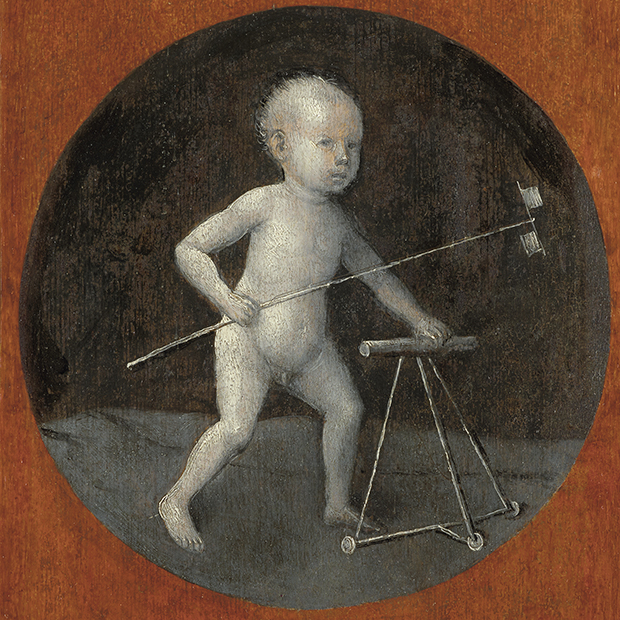
An earlier scene from a Book of Hours, illustrated for Katherina van Kleef about the same time, shows the Holy Family at work with baby Jesus safely on the move in a similar contraption.
Rembrandt has the last word, with a temper tantrum entering its final shattering stage, but without the existing support systems that we count on in Hackney.
